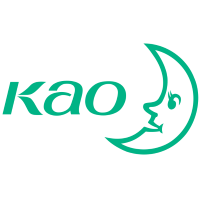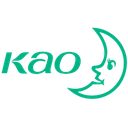
Kao Corp
TSE:4452


| US |

|
Johnson & Johnson
NYSE:JNJ
|
Pharmaceuticals
|
| US |

|
Berkshire Hathaway Inc
NYSE:BRK.A
|
Financial Services
|
| US |

|
Bank of America Corp
NYSE:BAC
|
Banking
|
| US |

|
Mastercard Inc
NYSE:MA
|
Technology
|
| US |

|
UnitedHealth Group Inc
NYSE:UNH
|
Health Care
|
| US |

|
Exxon Mobil Corp
NYSE:XOM
|
Energy
|
| US |

|
Pfizer Inc
NYSE:PFE
|
Pharmaceuticals
|
| US |

|
Palantir Technologies Inc
NYSE:PLTR
|
Technology
|
| US |

|
Nike Inc
NYSE:NKE
|
Textiles, Apparel & Luxury Goods
|
| US |

|
Visa Inc
NYSE:V
|
Technology
|
| CN |

|
Alibaba Group Holding Ltd
NYSE:BABA
|
Retail
|
| US |

|
JPMorgan Chase & Co
NYSE:JPM
|
Banking
|
| US |

|
Coca-Cola Co
NYSE:KO
|
Beverages
|
| US |

|
Walmart Inc
NYSE:WMT
|
Retail
|
| US |

|
Verizon Communications Inc
NYSE:VZ
|
Telecommunication
|
| US |

|
Chevron Corp
NYSE:CVX
|
Energy
|
Utilize notes to systematically review your investment decisions. By reflecting on past outcomes, you can discern effective strategies and identify those that underperformed. This continuous feedback loop enables you to adapt and refine your approach, optimizing for future success.
Each note serves as a learning point, offering insights into your decision-making processes. Over time, you'll accumulate a personalized database of knowledge, enhancing your ability to make informed decisions quickly and effectively.
With a comprehensive record of your investment history at your fingertips, you can compare current opportunities against past experiences. This not only bolsters your confidence but also ensures that each decision is grounded in a well-documented rationale.
Do you really want to delete this note?
This action cannot be undone.

| 52 Week Range |
5 762
6 954
|
| Price Target |
|
We'll email you a reminder when the closing price reaches JPY.
Choose the stock you wish to monitor with a price alert.

|
Johnson & Johnson
NYSE:JNJ
|
US |

|
Berkshire Hathaway Inc
NYSE:BRK.A
|
US |

|
Bank of America Corp
NYSE:BAC
|
US |

|
Mastercard Inc
NYSE:MA
|
US |

|
UnitedHealth Group Inc
NYSE:UNH
|
US |

|
Exxon Mobil Corp
NYSE:XOM
|
US |

|
Pfizer Inc
NYSE:PFE
|
US |

|
Palantir Technologies Inc
NYSE:PLTR
|
US |

|
Nike Inc
NYSE:NKE
|
US |

|
Visa Inc
NYSE:V
|
US |

|
Alibaba Group Holding Ltd
NYSE:BABA
|
CN |

|
JPMorgan Chase & Co
NYSE:JPM
|
US |

|
Coca-Cola Co
NYSE:KO
|
US |

|
Walmart Inc
NYSE:WMT
|
US |

|
Verizon Communications Inc
NYSE:VZ
|
US |

|
Chevron Corp
NYSE:CVX
|
US |
This alert will be permanently deleted.
Kao Corp
In the bustling landscape of Japanese industry, Kao Corporation stands as a quintessential example of ingenuity and adaptability. Founded in 1887, this venerable company began its journey by producing a humble product—washing powder—yet soon expanded beyond its domestic confines to establish a robust global presence. Driven by a philosophy of enriching lives with innovative solutions, Kao operates primarily in the chemical and consumer goods sectors. These include beauty care products, sanitary and health items, and a range of chemical products, used industrially. The company's deep-rooted commitment to research and development enables it to continually advance in areas such as cosmetics and hygiene, which underpins its vast portfolio of brands like Biore, Jergens, and John Frieda. Kao's relentless dedication to quality and sustainability has propelled it to a formidable position, proving its mettle in an industry where adaptability is key.
Enterprising at heart, Kao leverages a sophisticated understanding of consumer needs and market demands to fuel its economic engine. The company's revenue streams are intricately woven from both its B2C sales, powered by the proliferation of its household and beauty products, and B2B engagements through its specialty chemical solutions. This dual approach not only diversifies its income channels but also hedges against market volatility. By synergizing its product lines with an emphasis on eco-friendly innovations, Kao not only captures a loyal customer base but also aligns itself with global sustainability goals. In essence, Kao's fusion of tradition with forward-thinking strategies crafts a compelling narrative of a company that knows how to thrive by aligning its mission with market evolution.

In the bustling landscape of Japanese industry, Kao Corporation stands as a quintessential example of ingenuity and adaptability. Founded in 1887, this venerable company began its journey by producing a humble product—washing powder—yet soon expanded beyond its domestic confines to establish a robust global presence. Driven by a philosophy of enriching lives with innovative solutions, Kao operates primarily in the chemical and consumer goods sectors. These include beauty care products, sanitary and health items, and a range of chemical products, used industrially. The company's deep-rooted commitment to research and development enables it to continually advance in areas such as cosmetics and hygiene, which underpins its vast portfolio of brands like Biore, Jergens, and John Frieda. Kao's relentless dedication to quality and sustainability has propelled it to a formidable position, proving its mettle in an industry where adaptability is key.
Enterprising at heart, Kao leverages a sophisticated understanding of consumer needs and market demands to fuel its economic engine. The company's revenue streams are intricately woven from both its B2C sales, powered by the proliferation of its household and beauty products, and B2B engagements through its specialty chemical solutions. This dual approach not only diversifies its income channels but also hedges against market volatility. By synergizing its product lines with an emphasis on eco-friendly innovations, Kao not only captures a loyal customer base but also aligns itself with global sustainability goals. In essence, Kao's fusion of tradition with forward-thinking strategies crafts a compelling narrative of a company that knows how to thrive by aligning its mission with market evolution.
Profitability Improvement: Operating margin rose to 9.3% and ROIC improved to 9.3%, with EPS up 19.5% year-on-year.
Revenue Growth: Net sales reached JPY 1.232 trillion, up 3.5% year-on-year, and Q3 sales rose 5.2%.
Guidance Confidence: Management remains confident in achieving their full-year forecast and K27 targets.
Cosmetics Recovery: Strong recovery and profit growth in the cosmetics segment, especially in China and Japan.
Gross Margin Expansion: Gross margin improved to 39.1% YTD and 40.1% in Q3, with further gains targeted.
Strategic Initiatives: Ongoing reforms, cost controls, and marketing investments are driving quality-based growth.

































